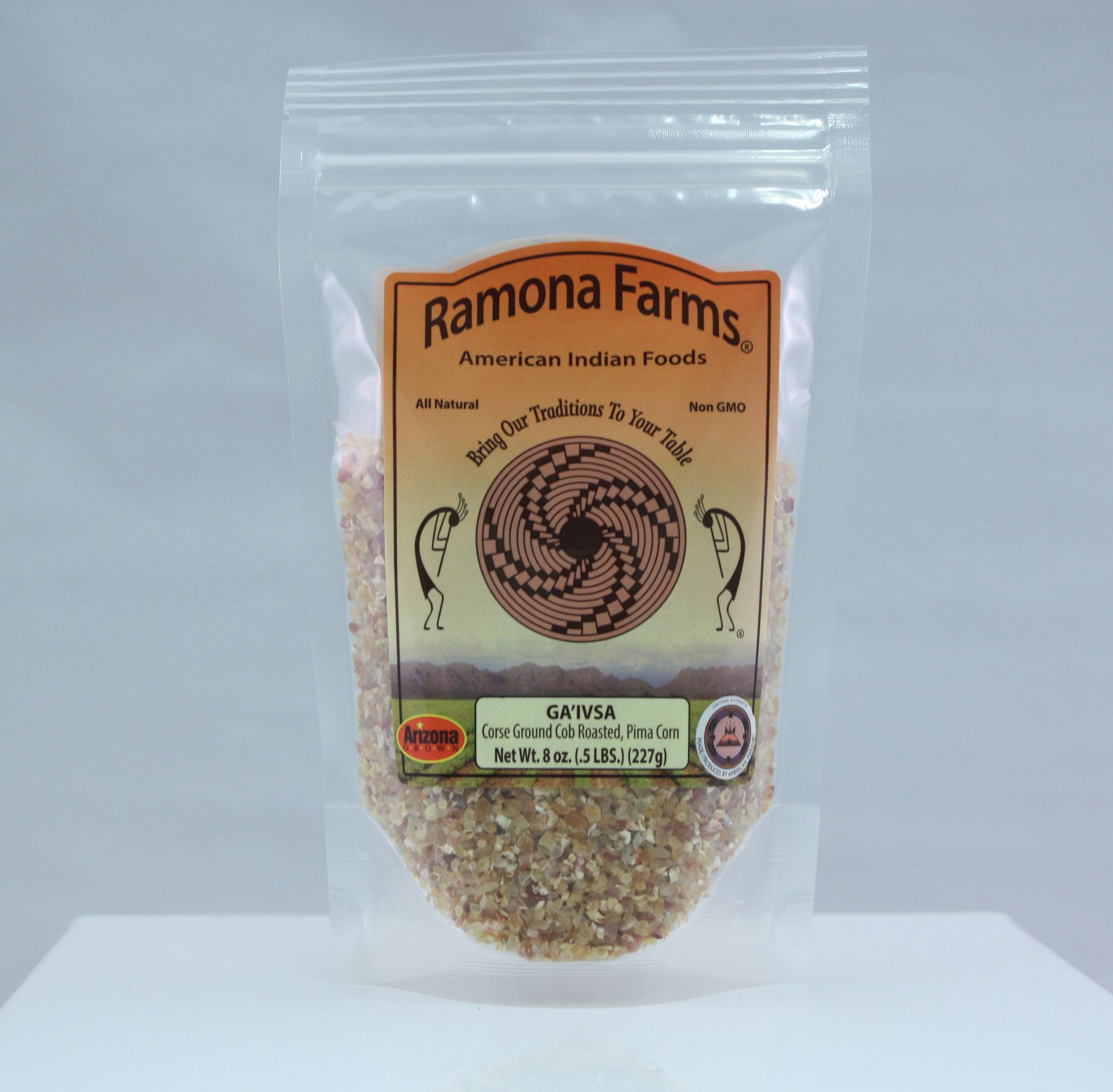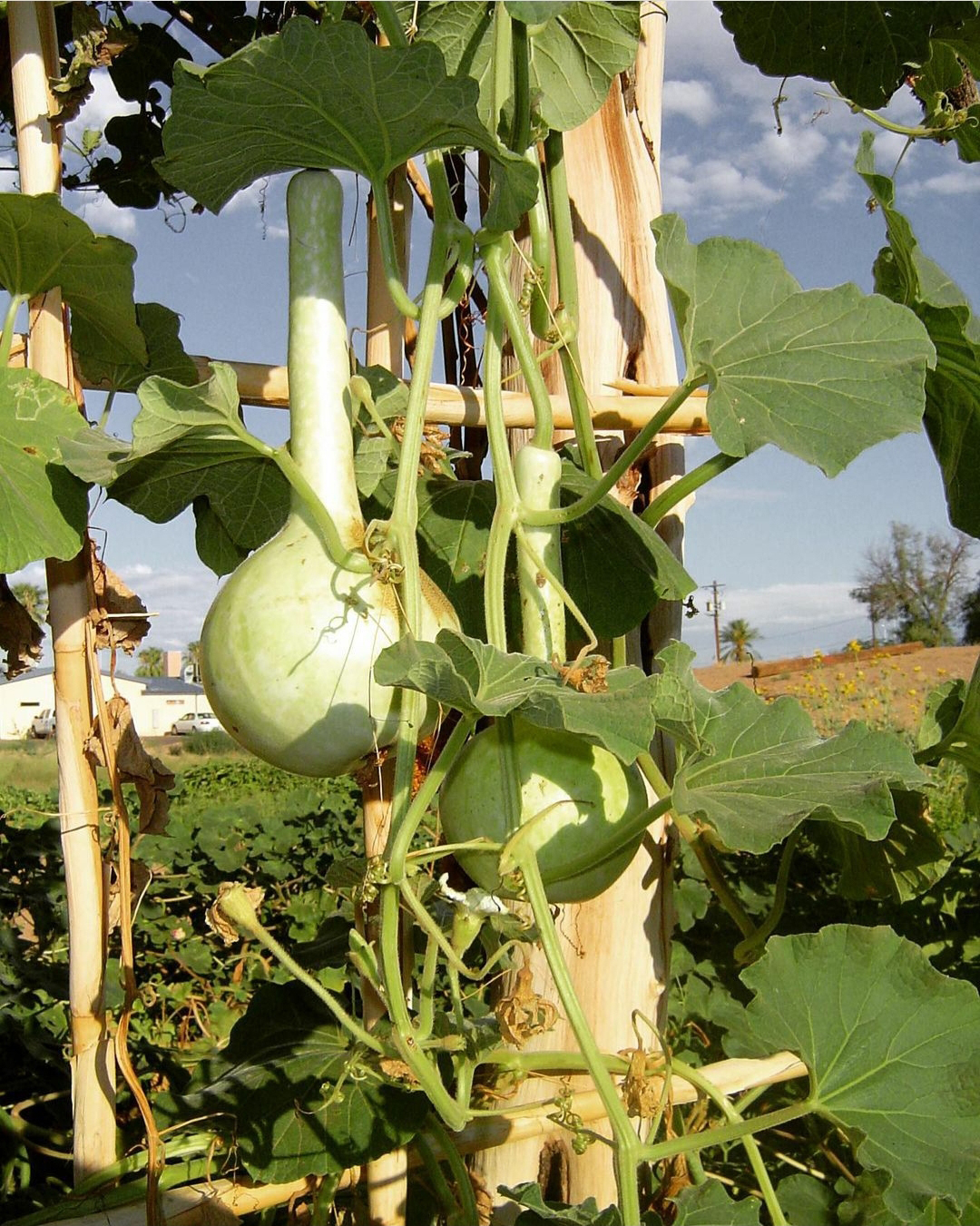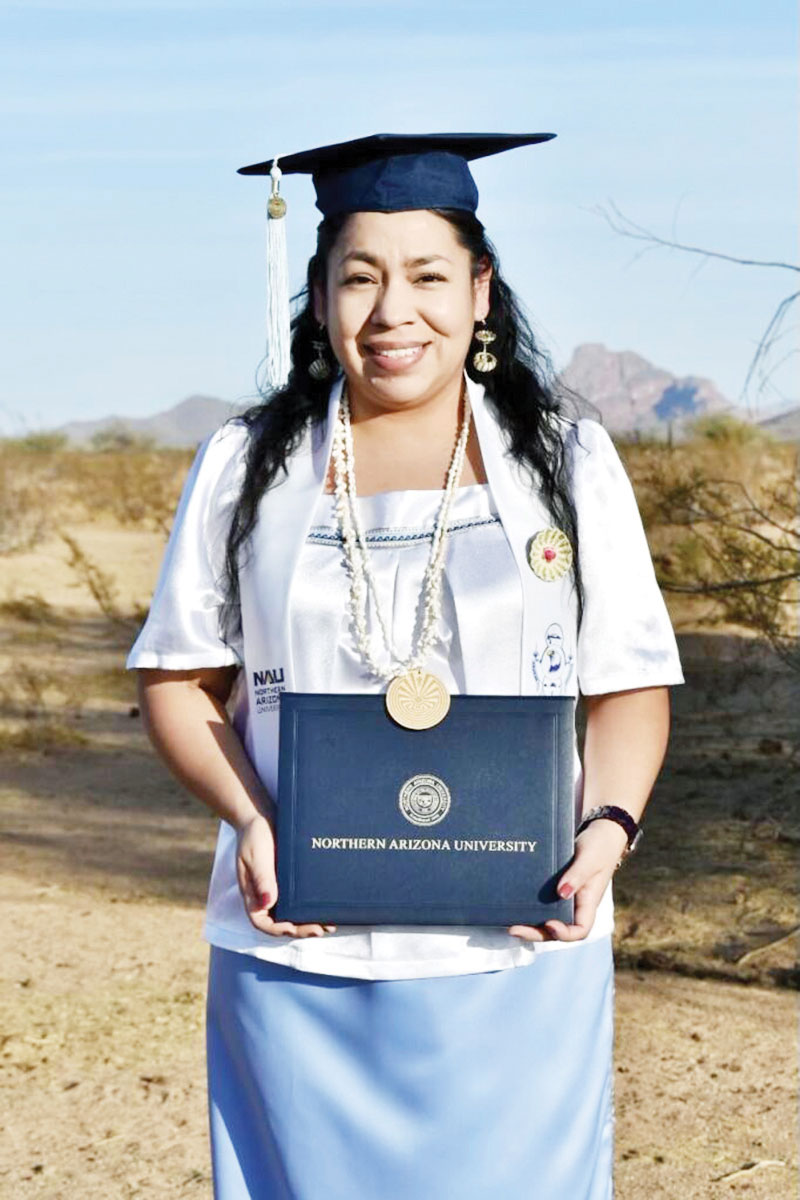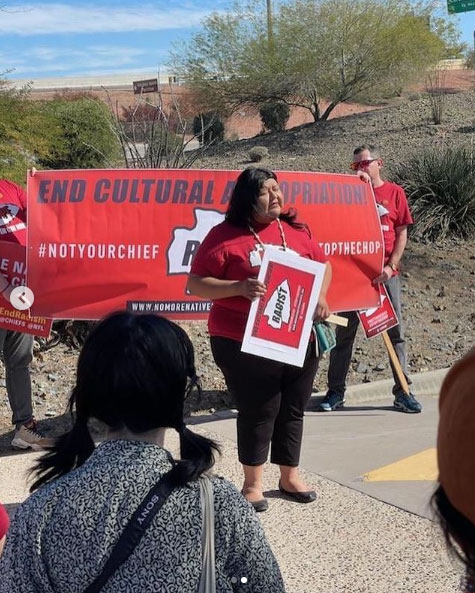VIEWS: 5992
December 16, 2020Piipaash and O’odham Traditions Continue During Winter Months
The traditional Piipaash and O’odham family and creation stories and harvests continue as usual for Salt River Pima-Maricopa Indian Community members who are not fazed by the limitations forced by the pandemic, and for those who feel a deep, necessary duty to keep cultural traditions strong during the winter months.
Jacob Butler, coordinator of the Community garden for SRPMIC Cultural Resources, said that in winter families would pass down creation stories and stories that had life lessons and ways of being. “They imparted our Himdag (way of life) in the lessons of the stories, the underlying constant that exists in all that we do. How we treat one another and view the world is our Himdag.”
On a chilly December evening, SRPMIC Director of Cultural Resources Kelly Washington and his family sit around a campfire at home. His children have heard the stories, but a night like this is a perfect opportunity to keep the stories fresh in the minds of the youth, in hopes that one day they will pass on the words to future generations as elders. His daughter wanted to hear the Xalychidom Piipaash coyote husband story again.
The condensed version of the story begins once upon a time in the Parker area along the Colorado River. The name of the people there, translated into English, is “Up River People” or “Northern People,” synonymous with being from up or the northern part of the river. Some tribes there got along with each other, and others did not. The Xalychidom Piipaash were at war at that time with the Mojave and Quechan peoples.
Washington tells his daughter, “There used to be thousands of us, we were a big powerful group, but all of that warfare took its toll. We could handle one [tribe] or the other, but sometimes with coordinated attacks, they would come from both sides.”
The tribe was thinking of leaving the area for a time because of the chaos. According to the story, the Coyote people heard that and didn’t think it was right that they had to leave their home. The Coyote people devised a plan to remain. They sent two young men to the Piipaash village to have a young Piipaash woman to go with them. Her family thought she was dead because she disappeared.
The story goes that they traveled to the Coyote people’s village and the people took on human form, living like human beings. The Coyote people said that they wanted the young woman to marry their leader’s son and have a baby. This way, the strength of the Coyote people and the strength of the Piipaash people would be combined, their son would grow up to be a strong warrior, and through that lineage and through his leadership, they would never lose a battle or have to leave their land.
She was mourned by her people because she was gone for a while. They told her to go back to her village and take her son with her, and her husband would visit with her for four days and nights, but the catch was she couldn’t talk about it. The plan was for the child, mother and the man to live in her village, with the son taking on coyote form.
When they arrived, the village saw her son only as a coyote puppy and they didn’t want him around because of how they feel about coyotes. Eventually, the woman’s brother ended up killing the puppy, not knowing it was his own nephew. He could not see him for who he was. The village started getting worried because they thought she had married into an enemy tribe and wanted to know what happened to her.
On the last night when her husband visited her, she told him what happened to her son. The next morning, it was announced that the plan for helping them wasn’t going to happen because of what happened. They could only see the bad in them. She disappeared after that, and it was assumed that she went back to the Coyote people.
The Xalychidom Piipaash ended up leaving there and joining other Piipaash groups on the Gila River. The group later went to Mexico for a while and eventually came back to Gila River again.
“Our group is the one that ended up moving to Lehi; that’s our home now,” said Washington. “In Lehi, we’re Piipaash, but we’re also Xalychidom Piipaash and that’s the story of how we left.” The moral of the story, according to Washington, is to mind your own business and not be blinded by your prejudice when you can only see the bad and not the good.
Besides telling stories like this, with the downtime of the pandemic, Washington suggests taking time to do traditional beadwork, basketry or pottery and work on speaking the languages of the Community. “This time is almost like a time of reflection,” he said.

Ga’ivsa, a course ground roasted cob made from Pima corn, from Ramona Farms. A 10% Native discount is available for purchases made at the Ramona Farms Farm Office Store.
Harvest and Meal Traditions at SRPMIC
Having grown together for generations, the Xalychidom Piipaash and Akimel O’odham share the traditional harvests born out of the resources of the land. According to Butler, the O’odham traditionally did not have a winter growing season. This time was historically spent harvesting and processing the foods grown over the summer and fall.
This was also a time to spend with family doing those activities and sharing creation stories during the winter while the ko:i (rattlesnake in O’odham) slept. After the Spanish arrived, they provided seeds that could be grown in the winter, like peas and wheat, giving the O’odham a winter growing season.
According to the stories passed down from elders, hunting of deer and rabbits was mostly done during the winter. This was to help minimize worms in the animals, which would be more prevalent during the heat of the summer.
Freshly stored squash, corn, beans and viohog (mesquite beans in O’odham) were eaten from the previous harvest in the summer and the short-season harvest of the fall. Then, as the winter went on, dried and stored foods would be utilized.
During the winter months, there are many ways the Community can still carry on with traditional foods. Chicos is a dried roasted corn that is very similar to ga’ivsa (dried, roasted cracked 60-day corn) and that can be added to soups or eaten as a dish itself. This can be found in Mexican grocery stores or the Mexican food section of the grocery store.
Another option would be to purchase tepary beans or Sonoran white wheat or O’odham club wheat. Some places that may carry this are the San Xavier Co-Op Farm, Ramona Farms or the Hayden Flour Mill Company. These, combined with gaivsa and chiltepin, make an awesome po:sol, according to Butler.
“Tepary beans with a smoked ham hock and a few small kokol (chiltepin) make a great meal,” he said. “O’odham ha:al is a cushaw squash, and some Mexican grocers may carry them. They are very similar to the ones we grow. An easy recipe is to bake the squash, cut it in half, and add piloncillo (Mexican brown sugar) and a bit of butter to taste until the squash is soft and brown. Then either eat it as is, in the shell of the squash, or blend it into an O’odham squash pudding. It’s really simple.”
The SRPMIC Community Garden is currently shut down as the Community handles the pandemic. However, some plants sowed in the spring have been cared for and harvested while maintaining a shorter field schedule.
The SRPMIC Cultural Resources Department currently gives Community members an opportunity to live the traditions through videos. CRD offers words and phrases in Piipaash and O’odham on their social media channels, which can be a good launching point for families to talk to their children or call up relatives and have discussions about the languages while socially distancing.







